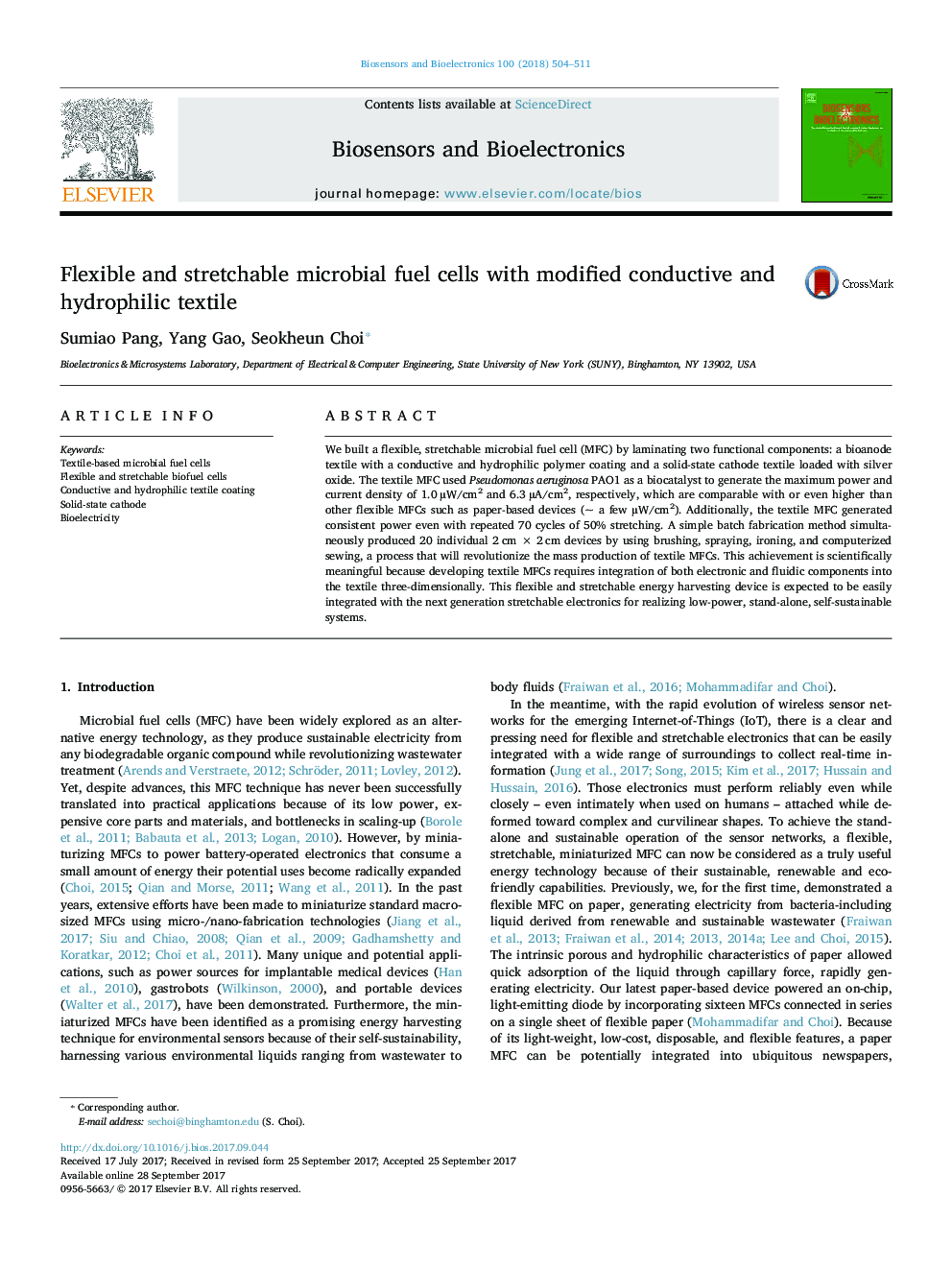| Article ID | Journal | Published Year | Pages | File Type |
|---|---|---|---|---|
| 5030816 | Biosensors and Bioelectronics | 2018 | 8 Pages |
Abstract
We built a flexible, stretchable microbial fuel cell (MFC) by laminating two functional components: a bioanode textile with a conductive and hydrophilic polymer coating and a solid-state cathode textile loaded with silver oxide. The textile MFC used Pseudomonas aeruginosa PAO1 as a biocatalyst to generate the maximum power and current density of 1.0 µW/cm2 and 6.3 µA/cm2, respectively, which are comparable with or even higher than other flexible MFCs such as paper-based devices (~ a few µW/cm2). Additionally, the textile MFC generated consistent power even with repeated 70 cycles of 50% stretching. A simple batch fabrication method simultaneously produced 20 individual 2 cm à 2 cm devices by using brushing, spraying, ironing, and computerized sewing, a process that will revolutionize the mass production of textile MFCs. This achievement is scientifically meaningful because developing textile MFCs requires integration of both electronic and fluidic components into the textile three-dimensionally. This flexible and stretchable energy harvesting device is expected to be easily integrated with the next generation stretchable electronics for realizing low-power, stand-alone, self-sustainable systems.
Keywords
Related Topics
Physical Sciences and Engineering
Chemistry
Analytical Chemistry
Authors
Sumiao Pang, Yang Gao, Seokheun Choi,
